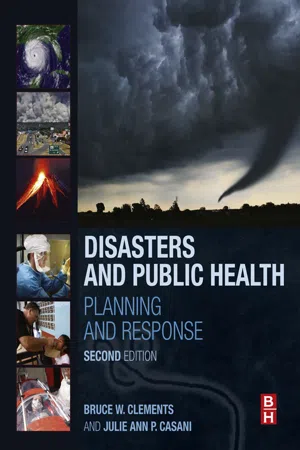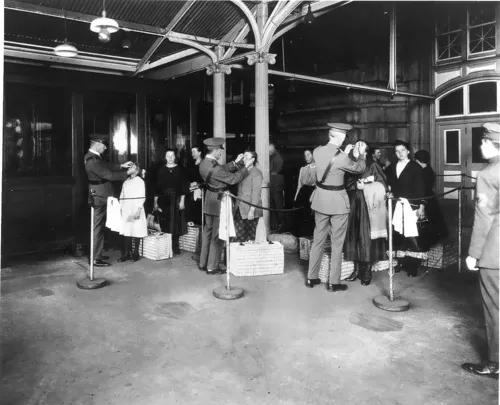
- 538 pages
- English
- ePUB (mobile friendly)
- Available on iOS & Android
About this book
Disasters and Public Health: Planning and Response, Second Edition, examines the critical intersection between emergency management and public health. It provides a succinct overview of the actions that may be taken before, during, and after a major public health emergency or disaster to reduce morbidity and mortality.Five all-new chapters at the beginning of the book describe how policy and law drive program structures and strategies leading to the establishment and maintenance of preparedness capabilities. New topics covered in this edition include disaster behavioral health, which is often the most expensive and longest-term recovery challenge in a public health emergency, and community resilience, a valuable resource upon which most emergency programs and responses depend.The balance of the book provides an in-depth review of preparedness, response, and recovery challenges for 15 public health threats. These chapters also provide lessons learned from responses to each threat, giving users a well-rounded introduction to public health preparedness and response that is rooted in experience and practice.- Contains seven new chapters that cover law, vulnerable populations, behavioral health, community resilience, preparedness capabilities, emerging and re-emerging infectious diseases, and foodborne threats- Provides clinical updates by new MD co-author- Includes innovative preparedness approaches and lessons learned from current and historic public health and medical responses that enhance clarity and provide valuable examples to readers- Presents increased international content and case studies for a global perspective on public health
Frequently asked questions
- Essential is ideal for learners and professionals who enjoy exploring a wide range of subjects. Access the Essential Library with 800,000+ trusted titles and best-sellers across business, personal growth, and the humanities. Includes unlimited reading time and Standard Read Aloud voice.
- Complete: Perfect for advanced learners and researchers needing full, unrestricted access. Unlock 1.4M+ books across hundreds of subjects, including academic and specialized titles. The Complete Plan also includes advanced features like Premium Read Aloud and Research Assistant.
Please note we cannot support devices running on iOS 13 and Android 7 or earlier. Learn more about using the app.
Information
Public Health Preparedness History and Policy
Abstract
Keywords
Biological warfare; Bioterrorism; Pandemic and All Hazards Preparedness Act; Public health preparedness capabilities; Public health preparedness history; Public health preparedness policy; Public health preparedness programThe Early Years

Establishing Modern Public Health Infrastructure
Table of contents
- Cover image
- Title page
- Table of Contents
- Copyright
- About the Authors
- Foreword
- Acknowledgments
- 1. Public Health Preparedness History and Policy
- 2. Public Health Preparedness Capabilities
- 3. Community Disaster Resilience
- 4. At-Risk Populations
- 5. Disaster Behavioral Health
- 6. Bioterrorism
- 7. Bombings and Explosions
- 8. Chemical Hazards and Disasters
- 9. Earthquakes
- 10. Emerging and Reemerging Infectious Disease Threats
- 11. Floods
- 12. Foodborne Threats
- 13. Heat Waves
- 14. Hurricanes, Typhoons, and Tropical Cyclones
- 15. Nuclear and Radiological Disasters
- 16. Pandemic Influenza
- 17. Thunderstorms and Tornadoes
- 18. Volcanoes
- 19. Wildfires
- 20. Winter Storms
- Index